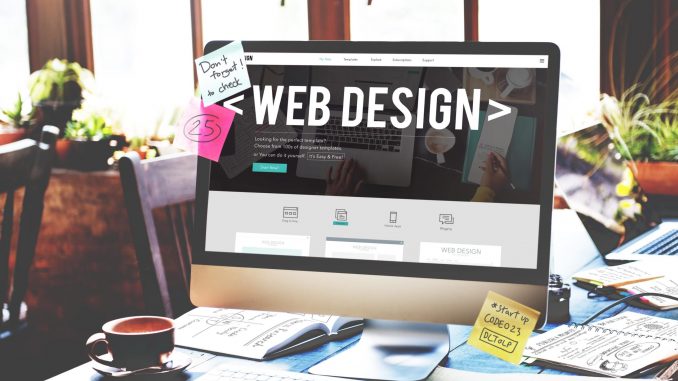
While you can partake in mass amounts of lead generation, paid ads, witty marketing campaigns, and more, many often forget the unsung hero in successful digital marketing: web design. If you want to drive people to your website, you’ll obviously need a site that is user friendly and easy to navigate. Here’s the low-down on web design and why it’s integral for your company’s success.
Successful Digital Marketing Starts with Your Website
Picture this: It’s 2022. We are in the social media age. Delivering content to your target audience is all dependent on a number of seemingly nebulous algorithms.
With innumerable companies, entrepreneurs, content creators, and everyone in between all battling it out for digital space supremacy, it can be very easy for your content to fall into the nether — especially when your posts aren’t favorable to the algorithm. Therefore, tailoring your content to fit a specific algorithm’s needs is imperative.
It’s important to note, however, that with the rise of Facebook and Instagram, many run the risk of just hosting their content on social media platforms of the like — thereby missing one key component to the successful digital marketing mix: a website.
A website, in fact, can be a gold mine for those looking to generate leads, provide better ROI, and ultimately increase revenue — but it all comes down to proper web design.
User Interface and Experience
Successful digital marketing is contingent on a positive user experience (UX). Built upon the fundamentals of web design, a positive UX is the byproduct of a well-functioning user interface.
When it comes to the interface, consider the following elements and questions:
- Typography: Can the user read this?
- Color palettes: Are the colors inviting and conducive to positive emotion?
- Imagery: Are these the visual elements best representative of our brand?
- Interactivity: Do all the buttons and clickable elements function as needed?
- Speed: Is your website loading properly, or is it being throttled by poor design?
Once your website’s aesthetics are nailed, you’ll need to focus on shaping a positive experience from start to finish. Chances are you’ve brought people over to your website because you want to sell your product — but how do we convert potential customers into buying ones?
Obviously, you need a product or service that delights users and/or addresses pain points that they may have. But when it comes to web design, a functioning pipeline that guides users from the start of transaction (initial contact) to the end (purchase) is necessary. Consider inputting elements such as (non-intrusive) pop-ups to advise users of potential sales, a chat box that offers round-the-clock support, and even a drop-down cart that accompanies users as they shop online. Don’t forget a contact page to further extend the olive branch between company and customer.
Building Brand Identity and Awareness
Along the lines of a successful user interface, one of the first things people will notice when landing on your website is its visual appeal. Through your website’s aesthetics, this presents an opportunity to build brand identity and awareness — marking a crucial step towards successful digital marketing.
says that brand identity “encapsulates your business’ vision by portraying it in a way that’s understood — and most importantly — embraced by audiences. It’s part of the association they’ll make to your company and over time will build brand trust and foster loyalty, ultimately impacting the way they perceive your brand.”
Having a consistent brand identity and appealing to your target demographic is important in building brand loyalty. Furthermore, you’ll want to ensure that your goals, objectives, and morals are aligned with your brand and its intended audience. But how do you make these elements stand out on your website?
Consider the following elements:
- Tone of voice: Am I speaking the way my intended audience should be spoken to?
- Imagery: Are the visuals on my website in alignment with my product and target audience’s needs?
- Logo: Is my brand logo sprinkled throughout the site? (Think: the instant recognizability of the Nike Swoosh logo)
The Importance of SEO
Beneath the surface of a shiny new website, you’ll need to make sure that your website is SEO-friendly. Short for Search Engine Optimization, it is a process to ensure your website is primed to be indexed by search engines like Google. Ultimately, this is one of the most important steps when it comes to successful digital marketing.
Incorporating keywords that are relevant to your website’s content, utilizing alt text on images, and inputting in/outbound links will help bolster your website’s SEO ranking. On top of that, it’s important to have engaging headlines and content, while also maintaining a consistent posting schedule. Regularly updating your website ensures your website stays afloat.
And don’t forget to compress your images before uploading. This is of utmost importance as it ties back to the user experience (UX). If adding uncompressed images to your website, you are essentially dropping an anvil’s weight onto your page — thus throttling its load time and making for a poor user experience.
Successful Digital Marketing with ONE18MEDIA
From web design to social media to copywriting, successful digital marketing is not a complete one-and-done deal. In fact, it is a constantly evolving process. ONE18MEDIA, however, represents the perfect package of well-versed multimedia talent to take your business to the next level.
With our expertise and experience, we have proven to generate leads, provide better ROI, and grow businesses and their revenue. To learn more about how ONE18MEDIA can help you come up with a successful digital marketing strategy, please visit and for a free consultation today!

Leave a Reply